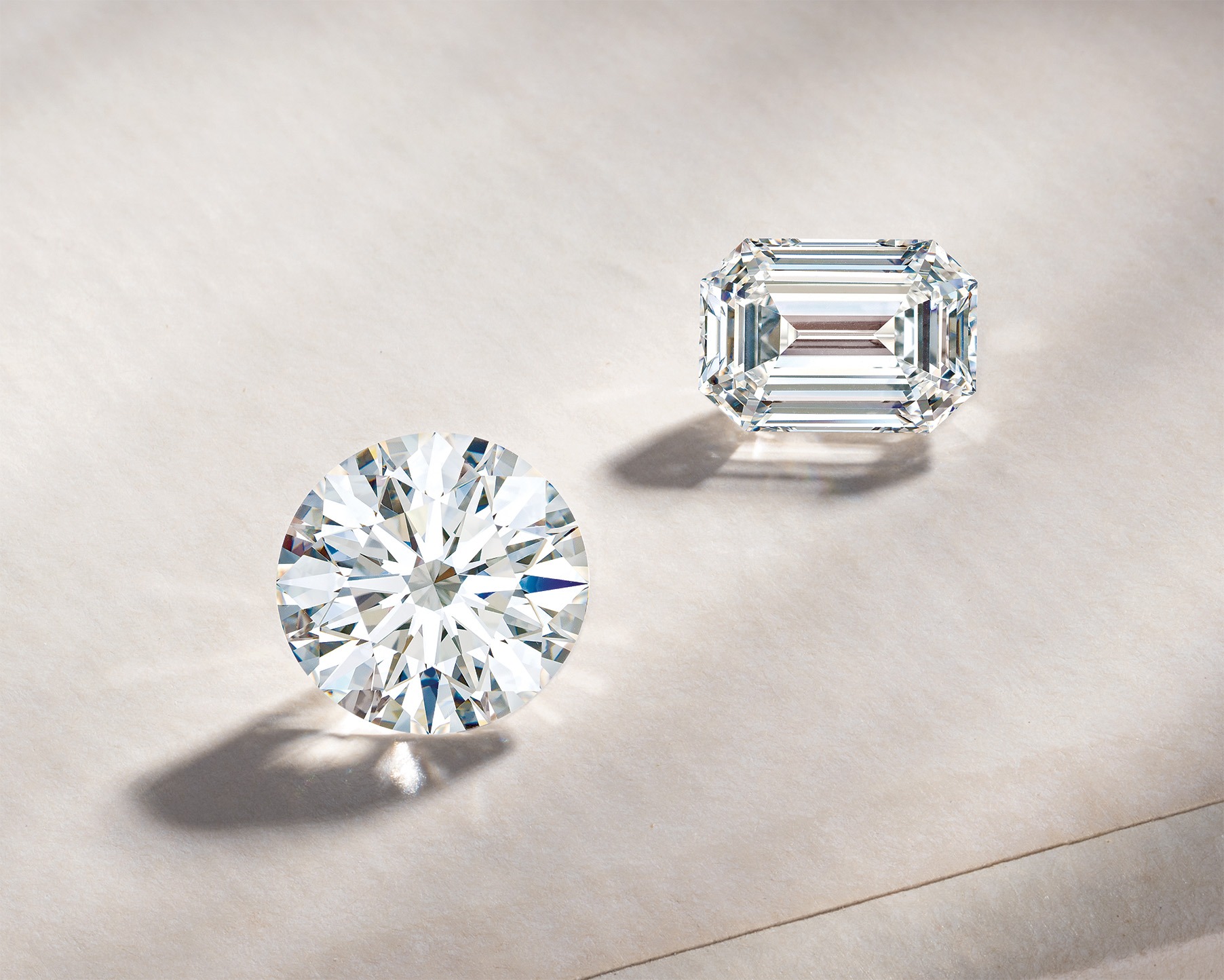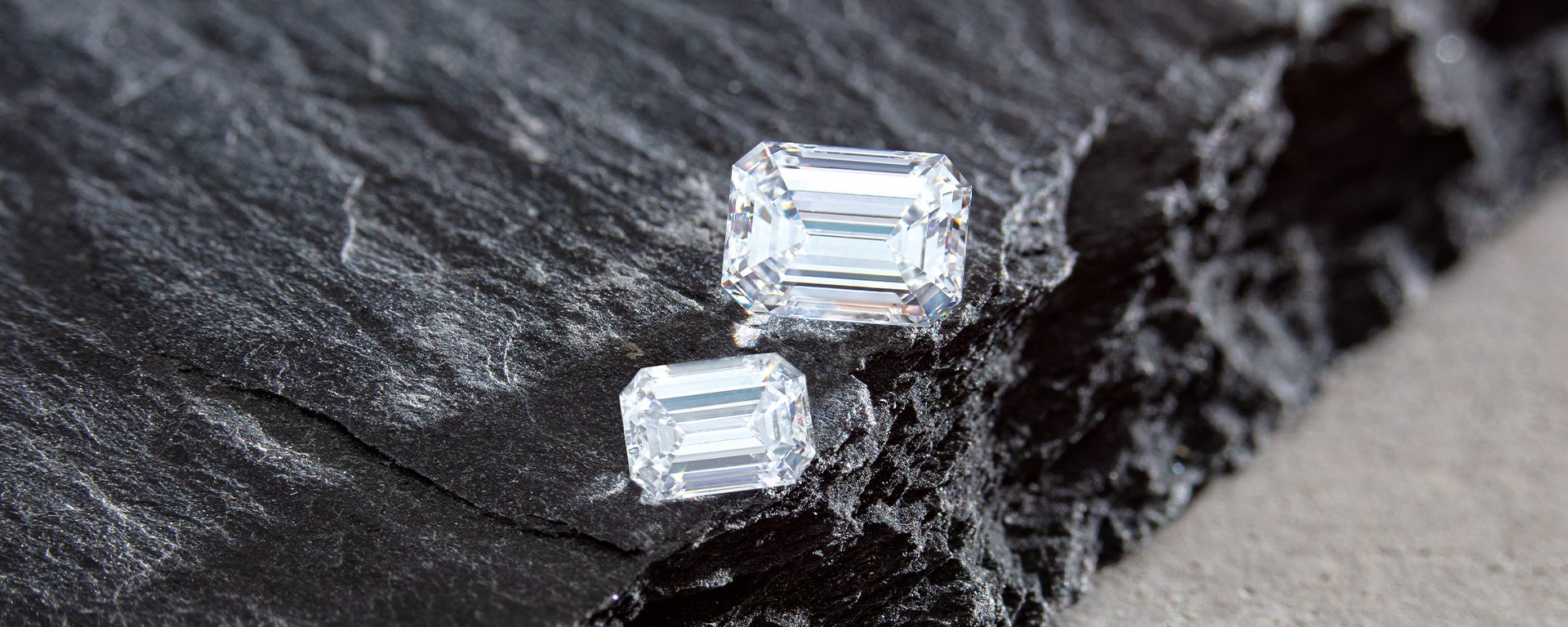What You Need to Know About Diamond Carat Weight
Easily navigate conversations about diamond carat weight and address your customers’ needs.
When it comes to diamonds, carat weight often takes the spotlight, but it’s just one piece of the dazzling puzzle. In the realm of the 4Cs of Diamonds — cut, color, clarity, and carat weight — understanding the nuances of carat weight is crucial for guiding your customers to the perfect stone. Contrary to popular belief, carat weight doesn’t solely dictate a diamond’s size; it’s a multifaceted consideration that we’ll explore in detail.
What is Diamond Carat Weight?
When referring to diamonds, a carat is a unit of weight measurement that is equal to 0.2 grams. It should not be confused with karat, which refers to the composition and content of gold alloys. While carat weight is not the only factor that determines the apparent size of the diamond, it has a linear relationship. As the carat weight increases, so does the size of the diamond. It is a critical factor in determining the cost of the diamond.

The Relationship Between Diamond Carat Weight and Cut
Another major factor in determining the size of the diamond is how it is cut. The orientation of the facet angles when combined with the weight will give the size. Variations in cut quality as well as shape can result in a significant difference in how large diamonds of the same carat weight are perceived.
For example, if you are examining a shallow-cut one-carat round diamond and an ideal-cut one-carat round diamond, the shallow-cut stone will appear larger from the top view even though both diamonds weigh the same. This can impact the price to make a diamond that looks larger more attainable because it will also affect the visual appeal of the diamond in terms of brilliance.
Shape also has an effect on the apparent size as there are certain shapes that look larger than others of the same weight when viewed next to each other. For example, a one-carat elongated diamond — such as a pear or emerald shape — will appear larger than a one-carat round diamond.
What are Magic Sizes?
Diamonds can come in any weight, size, and quality. When it comes to carat weight, there are certain weights referred to as magic sizes. These are weight boundaries where the value of the diamond significantly increases, particularly at the one carat mark. Common magic sizes include 0.25 carat, 0.5 carat, 0.75 carat, and 1 carat.
For example, let’s say there are two round brilliant diamonds. They have the same grades of cut, clarity, and color. However, one of the diamonds is 0.92 carat and the other is 1.02 carat. The slightly larger diamond will be significantly more valuable than the slightly smaller diamond even though visually they will look identical.
Knowledge of the magic sizes will be critical with customers as you help them find the right diamond. Some customers would prefer to have an affordable diamond that is close enough to one carat. Other customers will prefer to hit that one carat mark.

Selling Tips for Diamond Carat Weight
As with selling any piece of jewelry, selling a diamond based on carat weight hinges on your knowledge of what the customer wants and how you can deliver within their budget. Use these tips to help guide you in those conversations to close the sale.
Understand Customer Preferences and Plans
Ask your customer about the piece they are looking to set. Many customers might not respond well to being initially suggested diamonds for a pair of stud earrings at the same carat weight you would suggest for a diamond being set in an engagement ring.
Discuss Budget and Customization Options
As mentioned in previous articles regarding diamond quality, you can adjust the various factors of diamond value — such as carat weight — to find the stone that fits your customer’s price point. You can also customize the design of the piece to accommodate style preferences. If a customer’s style calls for a larger diamond than their budget accommodates, you can offer to use a setting that gives a larger appearance to the center stone, such as a halo-style setting.
Use Visual Comparisons
While we as jewelers might have a general understanding of the difference between a one-carat round diamond and a 1.5-carat round diamond or a one-carat round diamond and a one-carat oval diamond, your customer likely won’t. Compare diamonds side by side or on the customer’s hand to show the difference carat weight can have between different diamonds. Helping them visualize can increase desire and may even result in a larger purchase.
Bigger the Dream, Greater the Sparkle
There is a diamond out there for everyone. Helping your customers find the right one will instill trust, confidence, and loyalty. They rely on you to be their greatest educator. As you have discussions with customers on their perfect diamond, use these tips and resources to guide them to the best diamond for their dream piece.
Carat weight is only one part of the puzzle when it comes to diamond value. Check out these other articles on diamond clarity, cut, and color to cover the highlights in a comprehensive conversation about diamonds.
What You Need to Know About Diamond Clarity
What You Need to Know About Diamond Cut

Olivia Billet
Product Manager, Diamonds
Olivia attended the University of Louisiana at Lafayette, graduated with a bachelor’s degree in Public Relations, and is certified through GIA as an Applied Jewelry Professional as well as a Certified Sales Associate through the American Gem Society. Years of digging through her mom and grandmothers’ jewelry boxes lead to a love of diamonds and gemstones which she leans on every day in her role at Stuller.
